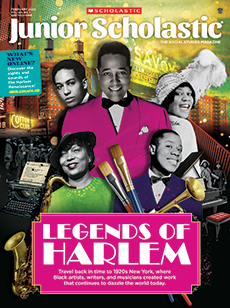Answer Close-Reading Questions
Have students write their responses, or use the Close-Reading Questions to guide a discussion.
• Why did John Mills find it empowering to learn about his family history? Include a quote from Mills to support your answer. (Text Evidence)
Mills found it empowering to learn about his family history because he discovered that his ancestors had built a powerful legacy in the face of extreme hardship. Mills says, “I began to see my family as incredibly strong because they endured so much.”
• Choose two sources from the sidebar, “How Mills Cracked the Newton Case.” Summarize how those sources helped Mills uncover the Newton family’s history. (Summarizing)
Sample response: Mills found an autobiography by Alexander Newton. From this, he learned that Alexander’s mother, Mary, had worked to free her husband from enslavement. Mills also found an 1860 newspaper article from the North Carolina town where the Newtons lived. The article explained that it was legal to whip Black people—both free and enslaved. From this, Mills learned that life in North Carolina was dangerous for the Newtons.
• Choose one of Mills’s family photos on page 18 or 19. Brainstorm three questions about the people in the photograph or the photograph itself. (Integrating Visual Information)
Sample response: I chose the photograph of Mills’s grandparents Milon Mills and Annie Idell Fuller Mills. First, I wonder what Annie Idell Fuller Mills is looking at. Second, I wonder if Mills’s grandparents are standing in front of their house or another building that was important to them. Finally, I notice that Mills’s grandparents are dressed formally. I wonder if the photograph was taken on a special occasion.
